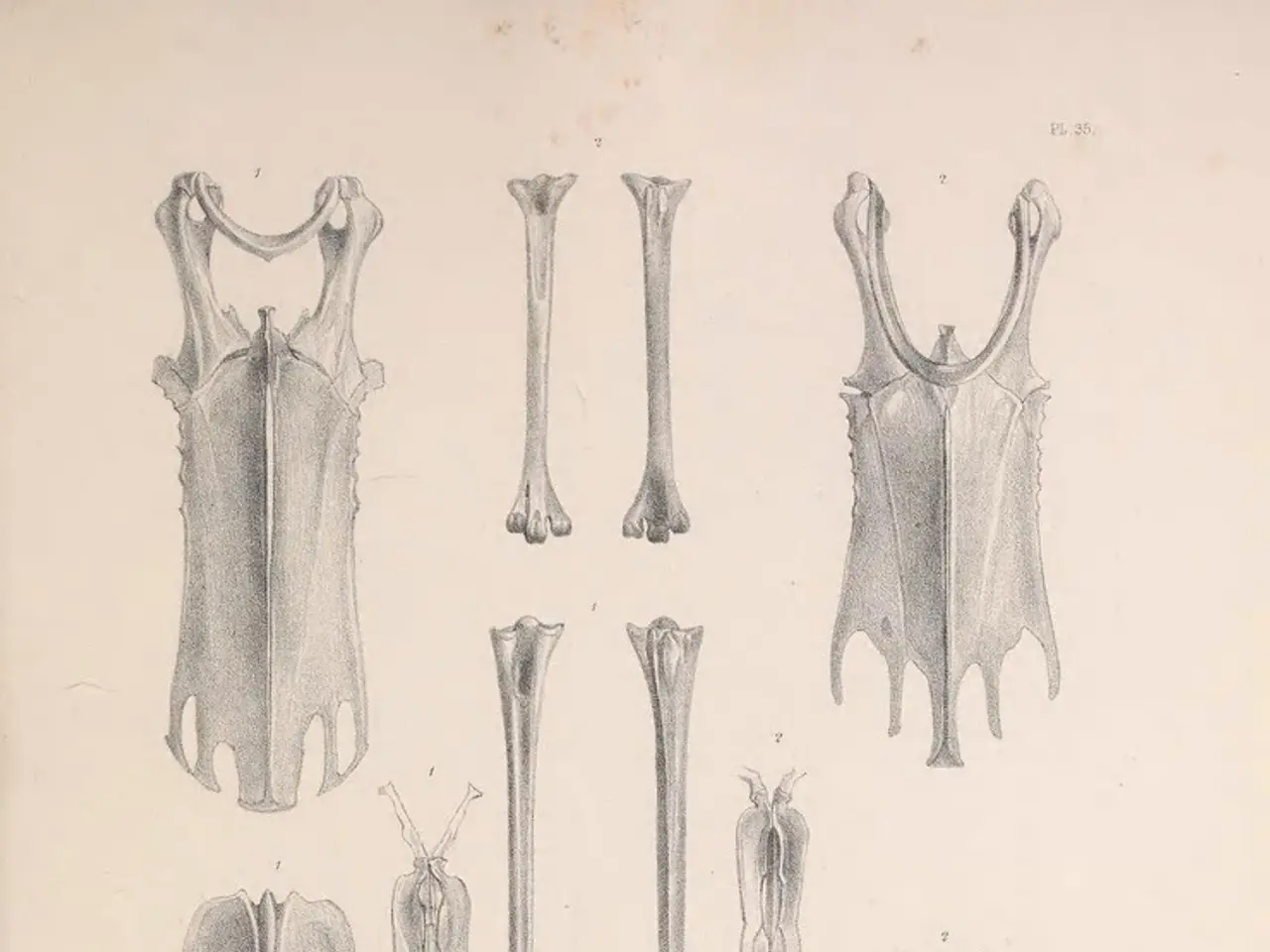The Essential Framework of Life: Understanding the Purpose of Our Bony Structures
The human skeleton, a fascinating structure that plays a crucial role in our bodies, is a topic of interest for many. It provides support, protection, and enables movement, making it an essential part of our lives.
Support
Bones form the body’s internal framework, maintaining its shape and preventing collapse. They support soft tissues and anchor muscles, giving the body a stable form. This internal structure is vital for our everyday activities, ensuring we stand tall and steady.
Protection
Bones also shield delicate organs from injury. For example, the skull protects the brain, and the rib cage safeguards the heart and lungs by acting as a hard protective shell against external forces. This protective role is crucial for our survival, as it helps to keep our vital organs safe from harm.
Movement
Bones work with muscles to facilitate movement. Muscles attach to bones, and when they contract, they pull on bones that act as levers. Joints between bones enable flexibility and a range of motions, allowing bodily movements like walking and grasping. The human skeleton, with its intricate network of bones and joints, is a marvel of engineering that allows us to move with ease and grace.
In addition to their structural roles, bones serve as storage for essential minerals like calcium and phosphorus, which are vital for muscle contraction and nerve function. Bone marrow inside bones also produces blood cells, supporting immune function and oxygen transport.
Exploring the Skeleton
For those interested in learning more about the human skeleton, there are many fun and educational activities available. A life-size skeleton from Fun at Home with Kids is a great starting point. Other resources include The Imagination Tree, I Can Teach My Child, and Emma Vanstone's Halloween Science Experiments, which offer engaging ways to learn about bones.
For a hands-on learning experience, you can practice fixing broken bones on a doll with Modroc, a material that simulates casts. This activity not only teaches about the importance of maintaining strong bones but also provides a practical understanding of how casts work.
Interesting Facts
- The human skeleton has 206 bones, but babies are born with about 300, with some fusing together as they grow.
- The femur is the longest bone in the human skeleton, found in the thigh.
- The longest bones in the body are found in the arms and legs and are shaped like tubes, allowing for flexibility and movement.
- The skull provides protection for the brain, and the spine, consisting of 33 small ring-like bones called vertebrae, plays a supportive role.
- Joints, where two or more bones meet, allow movement with the help of muscles. Ball and Socket joints, found in the shoulders and hips, allow movement in different directions, while Hinge joints, found in the elbow and knee, allow bending and straightening of arms and legs.
Soaking a chicken bone in vinegar for a few days can make it bendy due to the reaction with calcium carbonate, demonstrating how vinegar can break down the calcium carbonate in bones, making them softer. However, it's important to remember that this reaction doesn't occur in our bodies.
In conclusion, the human skeleton is a complex and fascinating structure that provides support, protection, and enables movement. By understanding its roles and exploring it through fun and educational activities, we can appreciate the wonders of our own bodies even more.
- Enhancing children's understanding of the human skeleton, it's crucial function in fitness-and-exercise and health-and-wellness, can be achieved through engaging science experiments, such as Softening Chicken Bones with Vinegar—an educational activity from Emma Vanstone's Halloween Science Experiments.
- Encouraging science learning amongst kids, Fun at Home with Kids offers a life-size skeleton that serves as an intriguing starting point to explore the amazing structure of the human skeleton and its essential role in our everyday activity.
- With a broader interest in science, children can explore the wonders of bones through resources like The Imagination Tree and I Can Teach My Child, gaining knowledge about the human skeleton and its fascinating capabilities that support movement and protect delicate organs.
- To promote practical learning, practicing fixing broken bones on a doll with Modroc creates a hands-on experience, teaching kids the importance of maintaining strong bones, and showing how casts work to support healing in fitness-and-exercise and health-and-wellness.




